Simple ways to measure soil health improvements in real time
Tap into your observational senses to mark progress anytime you’re out in your pastures.
The field was ablaze with thousands of their fluttering, flame-orange wings.
Once a solid bermudagrass monoculture, the rancher aimed to add diversity to restore the grazing land to its native prairie. That fall, the yellow blooms of the golden crownbeard (cowpen daisy) stood vibrant against the green growth. Thousands of migrating monarch butterflies took note of one of their favorite nectar sources, and Noble Regenerative Ranching Advisor Will Moseley got to bear witness.
“Talk about an ‘ah-ha’ moment,” Moseley says. “To get to walk amongst that pasture with that rancher and his family was truly unbelievable. I’ll remember that moment forever.”
This moment offered a once-in-a-lifetime glimpse into the progress the rancher was making toward his goal to add more life to the land. Still, Moseley says, it’s also important for ranchers to mark day-to-day improvement.
Measuring soil health doesn’t have to involve big, flashing ‘ah-ha’ moments; deep scientific analysis; time-consuming sampling or pricey tests. Instead, he suggests, when you’re out in a pasture fixing fence, restocking salt and mineral or checking water, take a minute or two to tune into your senses of sight, sound, smell and touch.
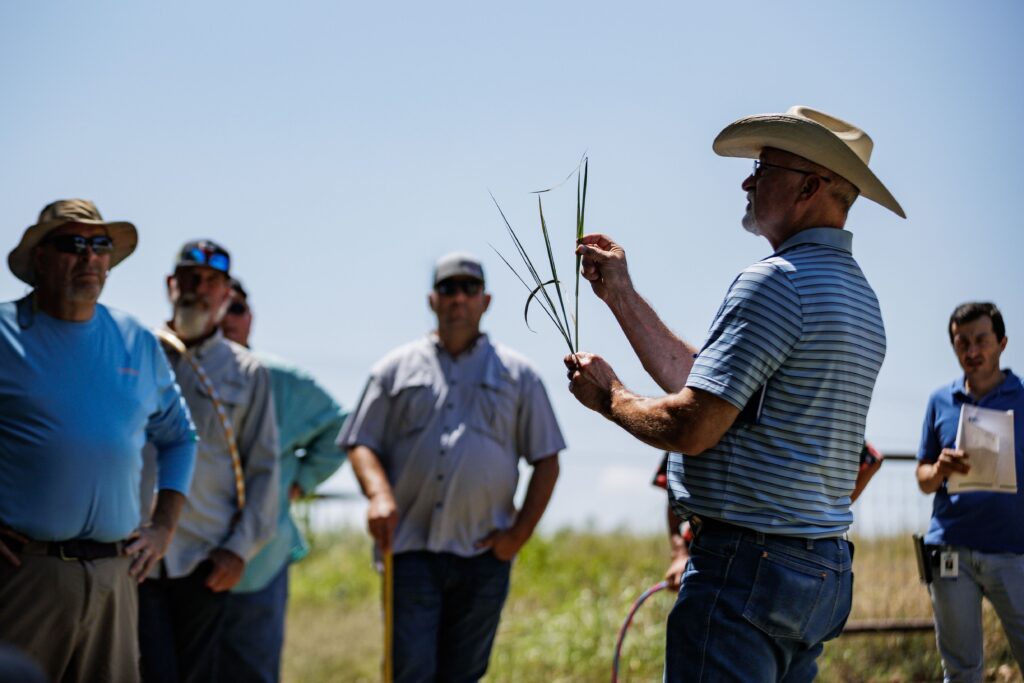
TAKE NOTE OF GROUND COVER, DIVERSITY, EROSION
The first step is to stop merely looking out across your pastures, Moseley says. Instead, look straight down. Whether you’re in your side-by-side, on your horse or on foot, look down and imagine throwing a hula-hoop at your feet. Consider the ground cover that would land inside that circle.
The goal of keeping soil covered is to armor it and reduce the amount of exposed, bare ground. If you were at 70% cover last year, and this year you see 75% or 80%, you’re making progress.
Next, take a look at species diversity. If you start with one dominant species – a Bermudagrass monoculture is a prevalent one in most of the Southern Great Plains – and the next year, you observe three species at your feet, “Well, that’s a big increase from where you started,” Moseley says.
Finally, look for signs of erosion. Do you see litter dams or plants that look like they’re on a pedestal with the ground around them washed away? If yes, is what you’re seeing active erosion, or is it healing?
“If you’re looking at these three things, you’re looking at some pretty solid indicators of your soil’s health,” Moseley says.
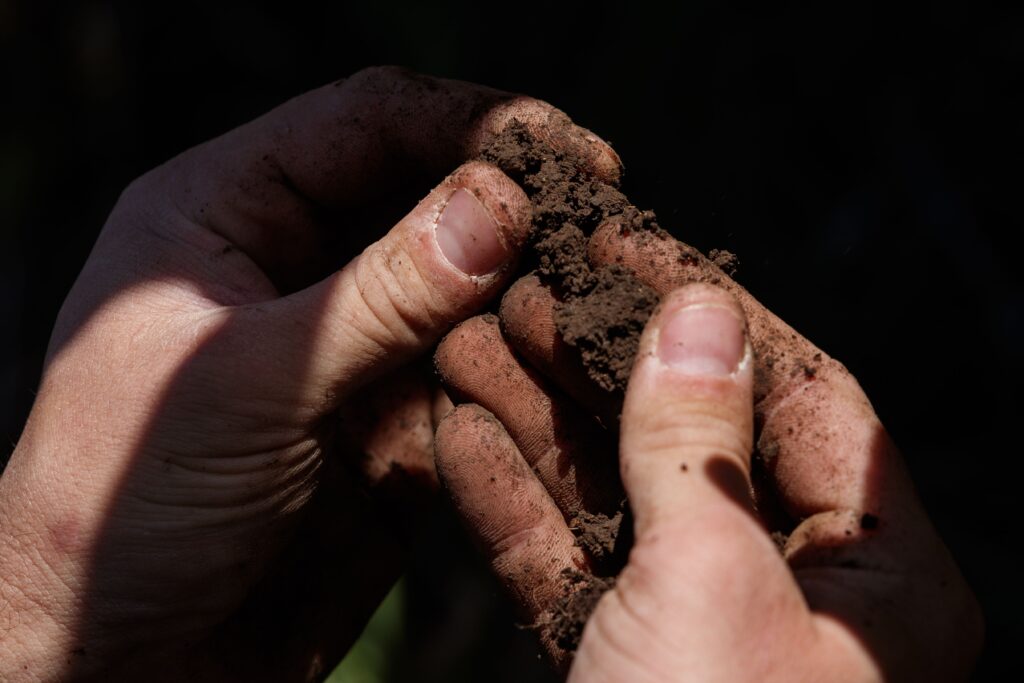
LISTEN FOR SOUNDS OF LIVING, VIBRANT LAND
While you’re at it, take a minute to turn off the engine and listen to the sounds of your land, Moseley suggests. Especially in the spring and summer months, it should not be silent.
“If you want your soil filled with life, you should be able to hear the life out there,” he says. Do you hear the buzz of the pollinators, the flap of bird wings, the rustle of grass or branches moving as critters scurry nearby? When it comes to the tiny life that thrives in healthy systems, he says, look especially for spiders.
“They’re the apex predator of the insect world, so if they’re abundant, you have lots of life,” Moseley says. Dung beetles burrowing holes in cow pats as they recycle nutrients into the soil, and pollinators like bees, butterflies, and moths, are two other important classes of soil health indicators.
TOUCH AND SMELL TO CHECK SOIL HEALTH
Next, grab a shovel and feel how easily it slides into the soil. This alone can give you a feel for the amount of soil compaction or changes in that soil’s makeup over time.
Turn a spadeful of soil over, then feel for its moisture content. You’re aiming for a spongy texture, similar to cottage cheese or chocolate cake. Take note of how your soil smells. You know the rich, earthy, fresh aroma of healthy soil. A handful with no smell likely indicates a lack of biological life; a metallic or sulfur smell indicates a heavy bacterial load in the soil.
Note the color of your soil – the more organic matter it contains, the darker it will be. Snap a photo and compare year-over-year images to look for a change in soil color. Note how deep the darkest shades extend below the surface. Did that rich topsoil extend an inch last year, but now you can see it down an extra half inch? That’s progress. Consider the below-ground life you can observe – grubs, worms, invertebrates.
“These are all things we can access in a matter of a minute or two to tell us how we’re doing in terms of our soil health,” Moseley says.
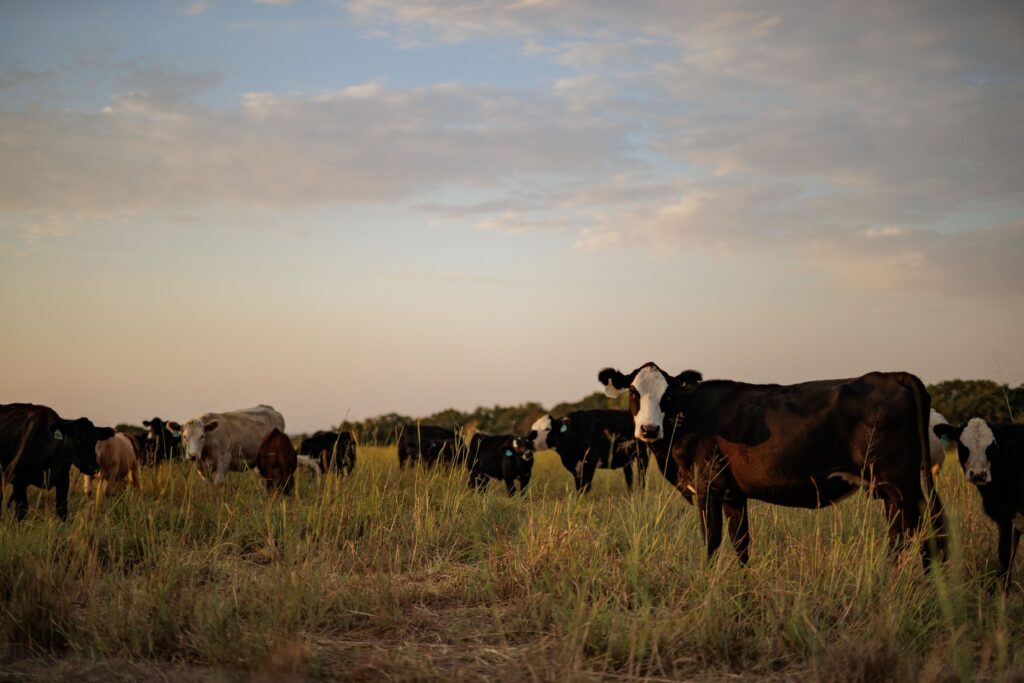
TRACK AND COMPARE YOUR OBSERVATIONS OVER TIME
“What’s most important is that you compare yourself to yourself,” Moseley says. “Every ranch’s starting point is different.”
Record these simple observations in a notebook that lives in the side-by-side or in your pocket, or on your phone in notes and photos. A spreadsheet tracking system designed by Noble regenerative ranching advisors to help measure progress over time is part of the Noble Land Essentials course, but Moseley says what matters most is finding a system you’ll stick to and use to record your observations consistently.
“A lot of these are going to be small victories over time,” Moseley says. “It might not be pretty in the process. You’re not going to go from a monoculture to a native tallgrass prairie overnight.”
So, while you may not get the great ‘ah-ha’ of a monarch migration homing in on your efforts to increase diversity, you might taste equally sweeter, if smaller, victories.
“To me, it’s almost just as amazing when a rancher begins to form this deeper appreciation for the things he sees every day on his ranch,” Moseley says. He points to watching life-long ranchers suddenly take note of dung beetles, excitedly crawling on their hands and knees to track the tiny recyclers.
“Things like that might have been there all along, but now they’re noticing it for the first time,” he says. “Sometimes it’s not necessarily an ‘a-ha;’ it’s more of an awakening, which is pretty cool, too.”

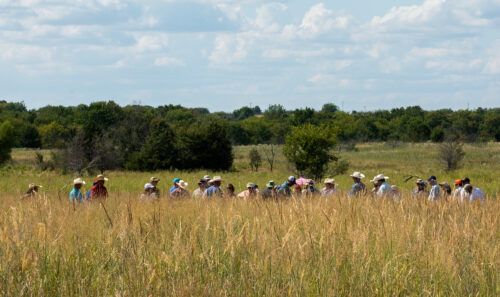
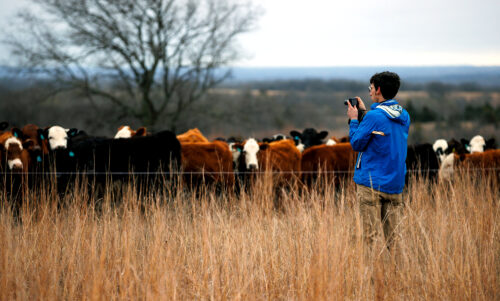
Comment